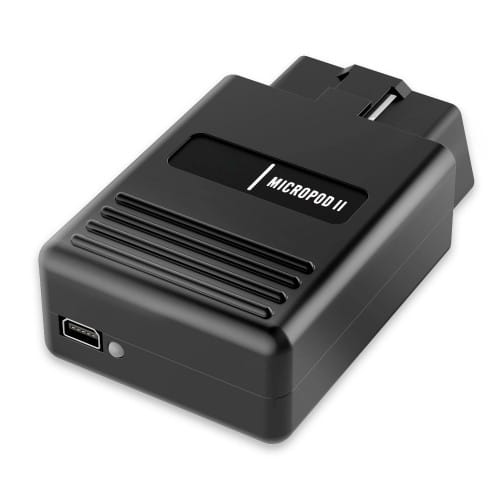How to Check Your Transmission Fluid Level | Easy Guide
TL;DR: A quick look at your transmission dipstick reveals if your transmission fluid level is optimal, ensuring smooth vehicle performance.

Introduction
Maintaining the proper level of transmission fluid is crucial to ensure your vehicle runs smoothly and avoids costly repairs. In this guide, we will explain how to check your transmission fluid level, discuss the signs of low fluid, and provide tips for transmission fluid maintenance. Whether you are new to car maintenance or a seasoned DIY enthusiast, this detailed walkthrough is designed to empower you to take control of your vehicle’s health.
Requirements and Tools
Before you begin, make sure you have all necessary tools and follow the recommended safety measures:
- Clean rag or paper towels
- Vehicle’s owner manual
- Gloves
- A level surface to park your vehicle
Ensuring your vehicle is parked on a flat surface is a key step for an accurate transmission fluid level check.
Step Sequence
Step 1: Locate the Transmission Dipstick
Begin by finding the transmission dipstick. In most vehicles, the dipstick is labeled clearly in the engine bay. Check your owner manual if you have difficulty locating it.
Step 2: Prepare the Vehicle
Start your engine and let it warm up for a few minutes. Ensure your parking brake is engaged to prevent any movement while you work. A warm engine allows the transmission fluid to flow better, giving you a more accurate reading. This step also ties into transmission fluid maintenance and proper maintenance practices.
Step 3: Remove the Dipstick and Wipe Clean
Pull the dipstick out slowly and use a clean rag to wipe off any old fluid. This initial cleaning is important because any residue can give you an inaccurate reading. The clarity of the fluid can also indicate its condition.
Step 4: Reinsert the Dipstick Fully and Remove to Check Level
After cleaning, reinsert the dipstick fully into its tube. Remove it again, and observe where the fluid level is relative to the marked indicators on the dipstick. This transmission fluid dipstick guide makes the process straightforward.
Step 5: Interpret the Fluid Level and Condition
Check if the fluid is within the recommended range. Also, inspect its color and consistency. Fluid that is darker than usual or smells burnt can be a sign of low transmission fluid or the need for a fluid change. Recognizing these signs of low transmission fluid early can save you from more serious repair issues.
Step 6: Add Transmission Fluid if Necessary
If your fluid level is below the indicated range, add the appropriate type of transmission fluid for your vehicle. Refer to your owner’s manual for the proper transmission fluid type and instructions on how to add transmission fluid. Avoid overfilling, as this can also cause performance issues. Regular checks and proper transmission fluid maintenance, including monitoring the transmission fluid change interval, are essential for optimal vehicle performance.
Signs of Low Transmission Fluid
Knowing the signs of low transmission fluid can help you diagnose issues early:
- Delayed or rough shifting
- Unusual noises coming from the transmission
- Transmission overheating
Transmission Fluid Maintenance Tips
Proper maintenance is key to extending the life of your transmission. Here are a few essential tips:
- Change Intervals: Follow the manufacturer’s recommendations on transmission fluid change interval for optimal performance.
- Fluid Types: Be sure to use the correct transmission fluid type for your vehicle to avoid potential damage.
- Regular Checks: Incorporate a routine transmission fluid level check into your regular vehicle maintenance schedule.
These practices contribute to overall vehicle longevity and are essential parts of transmission fluid maintenance.
Troubleshooting and FAQs
If you encounter issues while checking your transmission fluid, consider the following troubleshooting tips:
- Missing or Damaged Dipstick: If your dipstick is missing or appears broken, consult your owner’s manual or visit a professional technician immediately.
- Fluid Level Readings Seem Inaccurate: Ensure the vehicle is on a level surface and the engine is at the correct operating temperature. Environmental factors or human error may lead to misinterpretation.
- Using the Wrong Fluid Type: Double-check your manual to verify that you are using the correct transmission fluid type. Using an incorrect type can significantly harm your transmission system.
- Overfilling the Transmission: Exercise caution when adding fluid. Overfilling can lead to increased pressure and potential leaks or other issues.
FAQ 1: What if my transmission fluid still looks dirty after changing it?
Even after a change, residual contaminants might persist. It might be necessary to perform a transmission flush or consult a professional to ensure the fluid is completely refreshed.
FAQ 2: How often should I check my transmission fluid level?
It is recommended to check your transmission fluid level at least once every few months or as specified in your owner’s manual depending on your driving conditions.
FAQ 3: Can I use any transmission fluid, or does it need to match my car’s specifications?
Always refer to your vehicle’s manual for the correct type of transmission fluid. Using an incorrect type can result in poor performance or damage.
Conclusion and Call to Action
Regularly checking your transmission fluid level is integral to the smooth operation of your vehicle. As outlined in this guide on how to check your transmission fluid level, understanding the process, recognizing the signs of low fluid, and maintaining proper transmission fluid levels through timely changes can help avoid serious transmission issues. For more detailed car maintenance tips, visit TechRoute66 and keep your vehicle in peak condition.
Don’t wait until small issues become major repairs – make it a habit to check your transmission fluid regularly.
Written by Alex B., ASE Master Tech
Word count: 722


